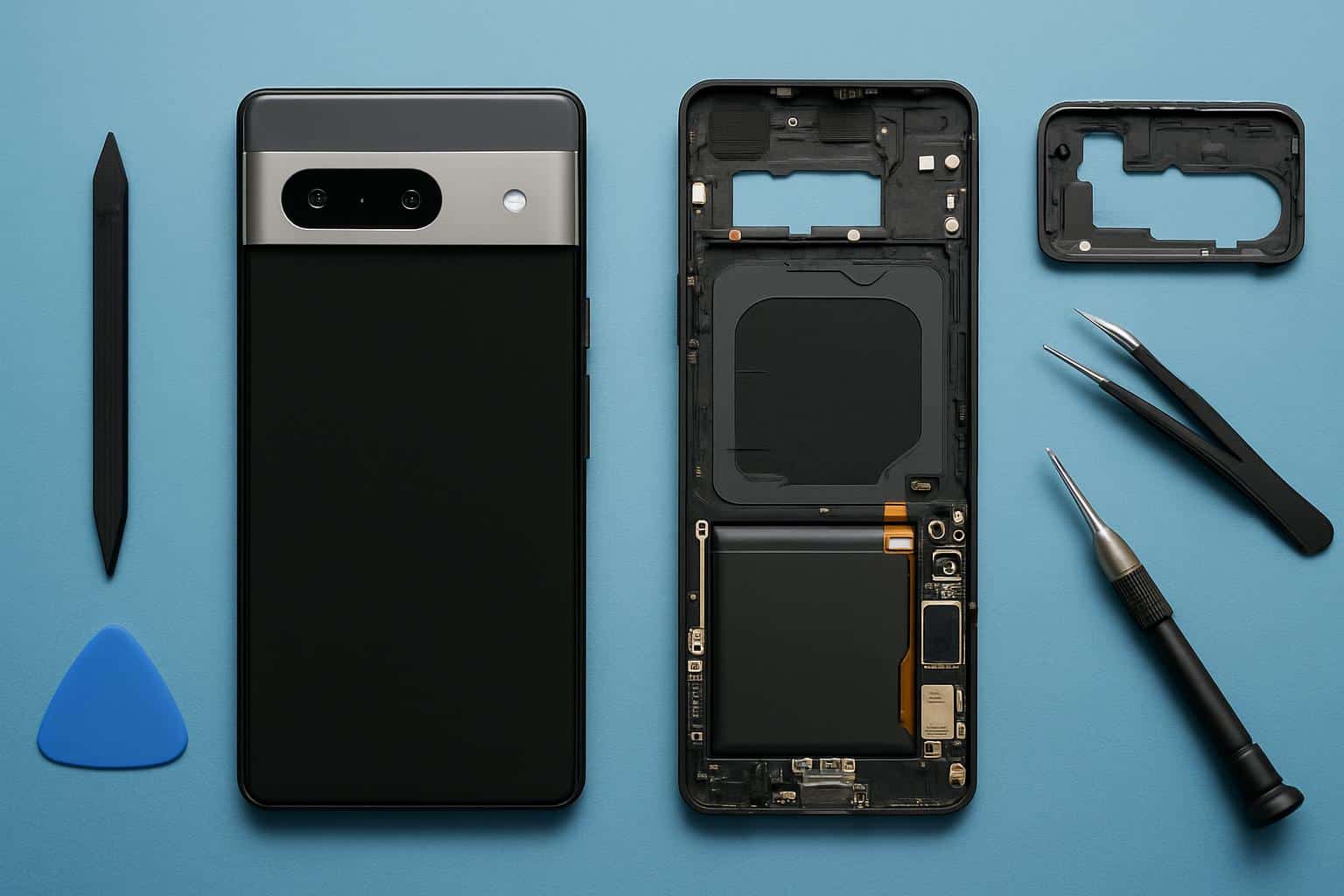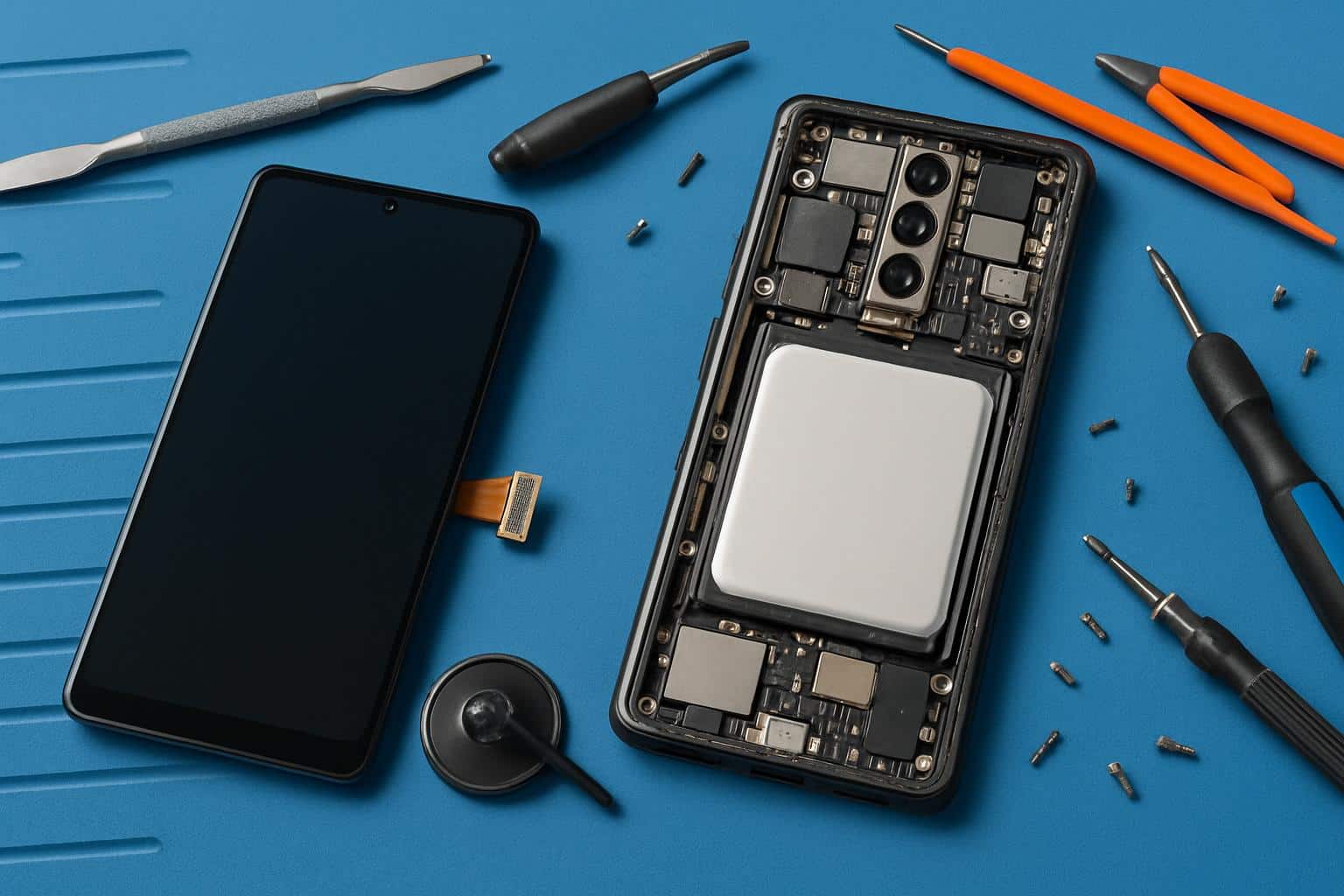A new teardown of Google’s Pixel 10 Pro XL offers a rare sight in the world of modern smartphones: a flagship designed to be repaired, not replaced. The thorough teardown, conducted by JerryRigEverything, gives us glimpses of a device that values easy screen and battery changes, complemented by detailed documentation for repair and a legitimate means to access parts.
A display swap that’s nearly foolproof
From the front, and they way the display starts ripping as the repair technicians want it to. After you’ve warmed and lifted the glass, there’s not much waiting on the other side — just a bare metal latch and a single ribbon that detaches with the ease of snap-fit connector. The panel is still operational and easy to read, which suggests the cable routing and adhesive selection was at least somewhat service-friendly.

According to the teardown, a trained technician could replace the screen in a few minutes. That level of accessibility is rare at the upper end, where ever-tighter water resistance requirements and thread-thin bezels almost always translate to brittle, glue-ridden processes that could turn a crack into a disaster.
REMOVES BATTERY ARE GENUINELY EASY
Even more remarkable is the battery strategy. Pulled from the back of the phone, the cell includes a big, well-labeled pull tab. Some confident tugs after separating a couple ribbon cables and battery plug and the pack pops free—no prying against delicate flex cables, no solvent bath, no wrestling with tough foam. That’s the sort of design that can cut down on both the time and danger of repairs.
That’s in stark contrast to the glued-in batteries that are still standard on much of the industry. To put that in context, independent repair shops commonly say that battery swaps are their bread-and-butter repair but also their most unnecessarily hazardous, because of deep adhesives and buried connectors.
Thoughtful design cues to expedite repairs
Aside from the headline parts, the Pixel 10 Pro XL demonstrates a repair-friendly trend: common Phillips fasteners, neat cable runs, and modular subcomponents that come out in logical layers.
There are still some hidden screws — most notably around the camera housing and the mainboard — but this is the exception, and not the rule.
And most usefully, Google issued a free 234-page service manual for the Pixel 10 Pro XL, and similar manuals for the other variants of the Pixel 10. These papers list torque specs, sequence diagrams and post-repair calibrations that can spare hours of guesswork. iFixit also offers real replacement parts, providing independent shops and intrepid DIYers a sanctioned source for parts rather than the uncertainty of aftermarket supply.

What’s still fiddly — and what isn’t
The teardown does acknowledge some gotchas. You have to pay special attention to camera modules and the motherboard given the hidden screws and sandwiched-in shields. It’s par for the course in a phone jammed with components like a flagship, and not exactly a deal-breaker, but it’s a place where first-timers can waste some time.
But the bigger thing is, the two most common and expensive repairs — screens and batteries — are blessedly simple. That alone can cut substantial labor costs and the chance of causing collateral damage during service.
Why this is important for owners — and the industry
It is a problem now -repairability is not a niche issue. The United Nations’ Global E-waste Monitor records tens of millions of tonnes of electronics waste produced annually — only a small fraction of which is recycled correctly. Longer-lasting phones are making medium-range devices more serviceable, extending the life of devices and delaying replacement cycles, keeping valuable materials in the market and out of landfills.
Policy winds are shifting, too. Right-to-repair laws in places like California, Minnesota and New York — and country-level movements in Europe under ecodesign and circular economy rules — are prodding manufacturers to make parts, tools and documentation available. By making display and battery replacements a simple undertaking and releasing comprehensive manuals, Google is putting the Pixel 10 Pro XL forth as such a model.
For customers, this means lower out-of-warranty costs, faster turnaround at certain local repair shops, and high re-sale values. For repair pros, it’s fewer hail-mary board-level procedures and more dependable jobs with consistent margins. And for the broader market, it raises the stakes: If one flagship can be made this easy to repair, excuses elsewhere will be that much more difficult to justify.
Bottom line
The Pixel 10 Pro XL’s disassembly is a list of things done right: clean screen access, humane battery pull system, documented procedure, and legit parts. Complex modules are still cramped, but the general direction is clear. But in a year filled with sealed slabs and precarious foldables, Mountain View’s latest shines a spotlight on the idea of making repair feel normal once more.

